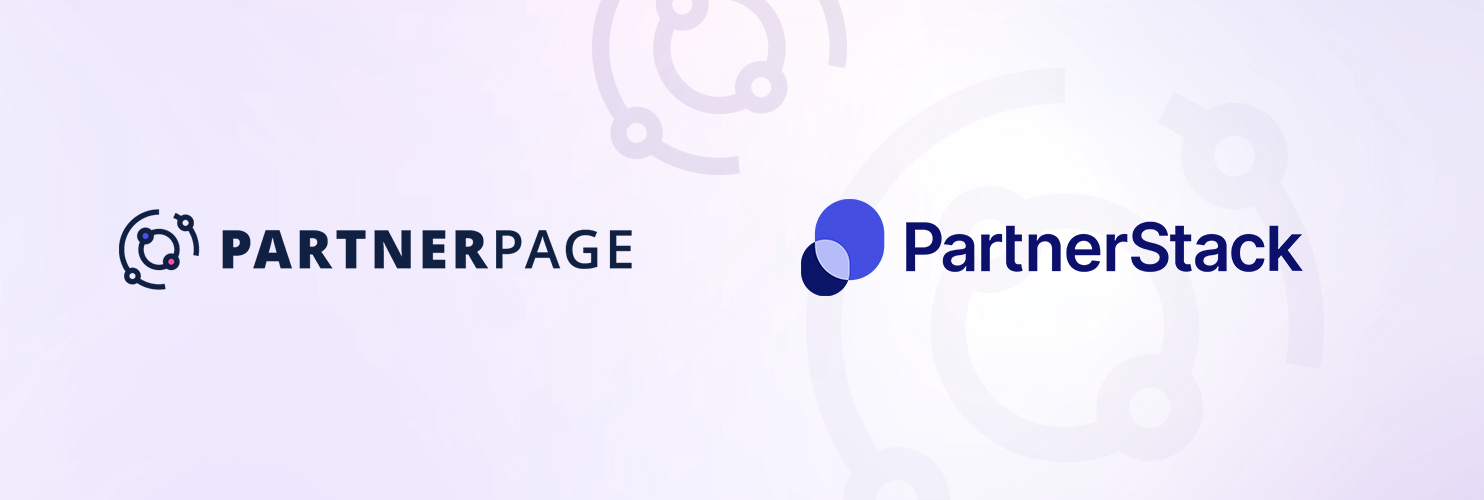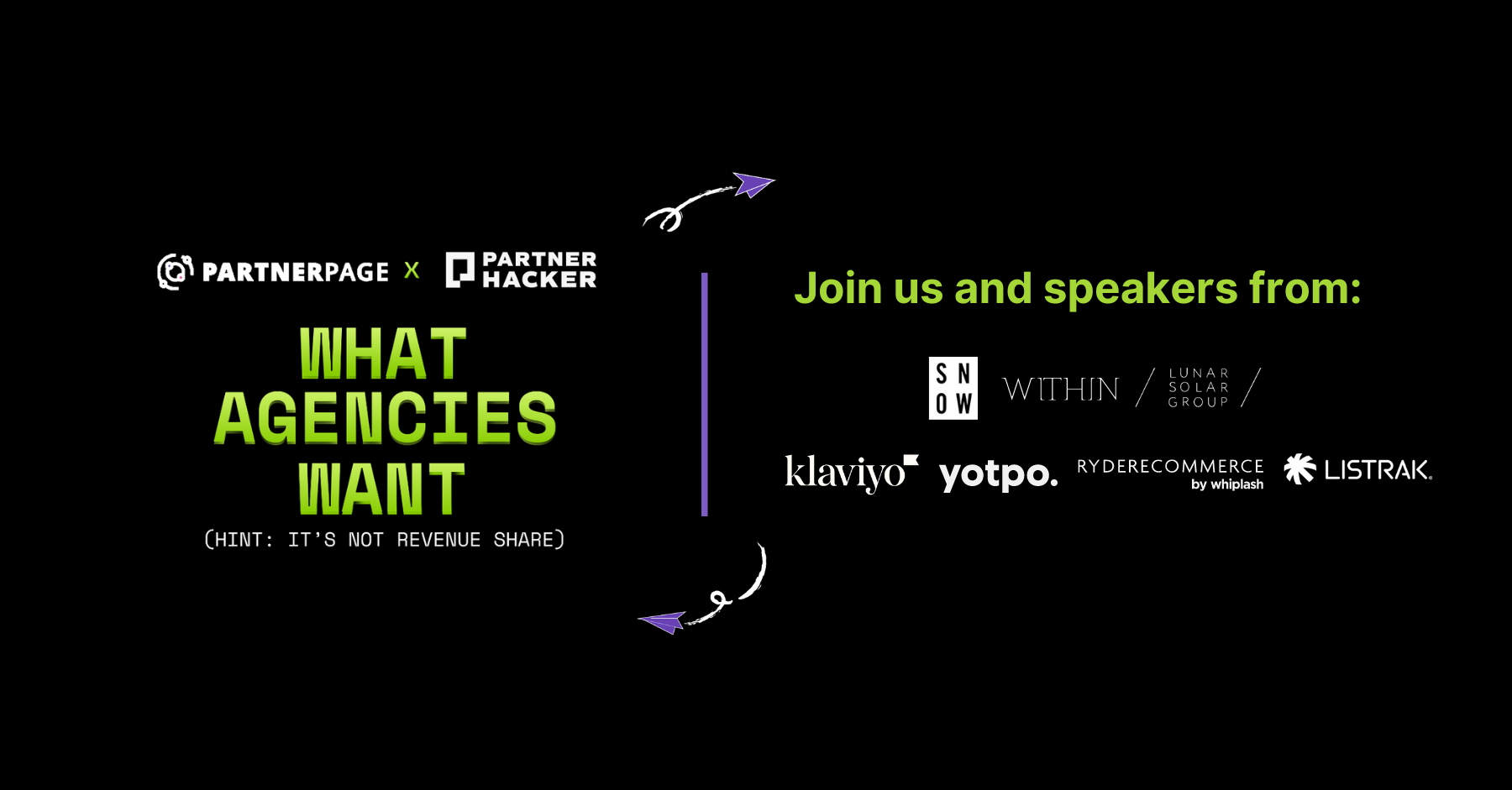By Stewart Wesley with input from Chris Samila (Crossbeam/Partner Leaders), Rich Gardner (Klaviyo), Dan Caldwell (Klaviyo), Dan Anand (Loop), Lindsay Kolinsky (Okendo), and Andrew Smith (Klaviyo)
It took me about 4 years in partnerships to understand a nearly complete strategy for building a strong technology partnership, and I only realized it a few months before leaving my role as a partnerships manager. My experiences are really based on eCommerce SaaS (I worked at Swell (before it was acquired by Yotpo) then Yotpo then Klaviyo) but I hope the takeaways described below are a bit more universal. This is just one recipe that worked for me and there are definitely other approaches as well.
What I learned, at the highest level, is that the following principles will guide you to successful technology partnerships:
- Build real and meaningful customer value (typically through an integration).
- Tell stories that are based on real data analysis to your teams and the market.
- Be empathetic to your partner and every stakeholder (CSMs, Sales managers, customers, partner managers, product managers etc.) in the process.
- Focus on your top priority partners and get it right, then repeat with the next most valuable partners. Adapt to changing priorities and don’t be afraid to say “not now” when a meaningful partnership doesn’t seem feasible.
As I see a ton of sharp CSMs, Account Executives, Agency Partner Managers, Product Managers, and people from all sorts of other roles come into Technology Partnership roles, I wanted to share this recipe to help all of you succeed. For all of you starting off in a new partnerships role, good luck! The entire partnership community benefits from your success.
Before we look at the “how”, I wanted to quickly call out the typical goals of technology partnerships so it is clear what we are working towards with this approach:
Goals of Technology Partnerships:
- Create customer value with integrations:
- For many, this can be a goal in itself (and maybe it should be). Integrations are well known to decrease customer churn and, in many cases, increase the ROI of your SaaS solution.
- Make sure your boss and boss’s boss have some understanding of the value of integrations because, as you can see below, there is a lot of work required to get to revenue and sometimes leaders can singularly focus on dollars referred.
- Drive new customer acquisition through direct referrals, deal influence, and co-marketing:
- I would argue that getting to sustainable revenue from technology partnerships also relies on #1 so there is a real value narrative for customers. It is really challenging to generate a referral partnership with a technology company that does not have an integration or other strong shared value proposition.
Steps to Build your Technology Partnerships:
- Get your organization ready for partnerships
- Develop a partnerships vision and strategy based on input from different departments and an empathetic understanding of their needs and resources.
- Get buy in from:
- Whoever leads partnerships.
- Whichever VPs/C-suite leader who has partnerships in their organization.
- The CEO.
- Develop working relationships with the Head of CS, Head of Sales, Head of Product, and Head of Marketing and understand their goals/resources and align on the role of partnerships in their organizations.
- Understand your toolbox for what value your organization can bring to your partners. Ask your partners this as well. Some examples include (but are not limited to):
- Being really good at sending referrals from your CS/sales team – Chris Lavoie at Gorgias appears to have mastered this.
- Have an outstanding partner marketing motion that is highly collaborative with your broader marketing team. Lindsay Kolinsky at Okendo demonstrates how impactful this can be by creating tons of meaningful content in close coordination with the broader Okendo marketing team.
- Build outstanding integrations or integration infrastructure. Klaviyo’s Track API is an awesome example of this.
- “Being able to send and retrieve data efficiently is pertinent in a world that requires multiple tools to successfully do business. Fast and nimble APIs are a MUST for any strong platform building technology partnerships today.” Andrew Smith, Senior Strategic Solution Architect at Klaviyo
2. Identify partners worth building an integration with (or identify existing high-value integrations)
This should be based on your customer overlap and integration use case potential. Strong customer overlap is great but low customer overlap can also show a bigger net new business opportunity. Alternatively, identify partners who have already built a valuable integration.
- This is a great time to use Crossbeam (or another account mapping tool) to understand what companies you have compelling customer or prospect overlap with.
- The total value of an integration can be roughly calculated as follows: Value of integration per customer * total number of customers/prospects who adopt the integration = total value of the integration
- “Confirm culture fit and investment energy from both sides early. Is this partner going to invest in your success and vice versa? Will they block and tackle inside their organization for you? Sometimes the integration use case is sound but the other company is too busy with other priorities. Understanding that the partner team is onboard, but also getting broader buy-in from around the partner’s business can be vital” – Chris Samilla, VP of Partnerships at Crossbeam
3. Align with the partner manager at your partner’s organization on the goals and resources needed for the partnership
- Fail or delay a partnership as early as possible in the process! Many partner organizations are too busy for a big project or don’t have full support from internal teams to make a new integration really successful.
- “Proper expectation setting and avoiding false promises is key. Be as transparent and upfront as possible about where you can and can’t add value. There are too many false promises in partner programs. It pays to avoid them in the long run.” – Dan Caldwell, Technology Partnerships Manager at Klaviyo
- Befriend your partner point of contact. Build rapport, send them gifts, buy them dinner, and understand what they are goaled on. You need to be able to be authentic and honest with them and this requires a strong working relationship and ideally, a friendship.
- Avoid signing a legal agreement unless you absolutely need it–nothing kills a partnership’s momentum like 10 rounds of redlines between legal teams.
4. Build an objectively valuable integration
If you can’t/shouldn’t build an integration, find an objectively valuable alternative offering that you can tell a story around. Normally, it is pretty difficult to find a shared story for a technology partnerhsip without an integration.
- This is arguably the most important step – all of the next steps are based on delivering really meaningful shared value to your shared customers and prospects.
- “A key question for two companies considering a technology partnership is ‘how would this partnership improve a shared customer’s experience compared to what our two companies can do already on our own? How does 1 + 1 = 3 for customers?” There may be lots of other reasons to partner with a company, but having a shared understanding of the answer to these questions makes a partnership more likely to succeed.” – Rich Gardner, VP of Global Partnerships at Klaviyo
5. Develop methods/strategies to help customers crawl/walk/run with the integration
- Data being pumped into your tool or into your partner’s tool is not valuable in itself – it needs to be integrated into your customers’ existing strategies.
- Create great help docs that not only help integrate but also help customers and client facing teams understand how to use the integration.
- Set up an initial group of guinea pig customers to try out the strategies that the partnerships managers, product managers, and relevant CS/Sales people think might work.
6. Prove the value of the integration with data and stories
- From there, customers and internal stakeholders need to understand the degree to which what you built in #4 and #5 is actually valuable and they need to be able to trust the measure of that value.
- If you can, use a highly credible internal source (like your data science/analytics team) to objectively evaluate the integration’s impact on performance metrics and customer outcomes.
7. Identify relevant client-facing team members
This should be done on both teams who are actively engaged with customers and prospects who can benefit from the integration (this analysis can be done with tools like Crossbeam).
- Client-facing teams are bombarded with information and requests. By identifying their customers who can benefit from the integration and providing meaningful resources (from 5 and 6!) you can make it easy for them to drive customer value with integrations.
- “Partner teams are increasingly spending energy on co-selling and co-marketing but the concept of co-retaining or co-successing is becoming a more common focus for forward-thinking organizations. Bringing together your CSMs and putting that partner overlap data into the view of that team allows for them to identify accounts where they can drive integration adoption or collaborate with partners on upsell or renewals.” – Chris Samila, VP of Partnerships at Crossbeam and Founder at Partnership Leaders
8. Educate team members (at both companies)
Educate them in the context of their specific owned accounts and prospects. Tell them which of their customers can use the integration based on your analysis in #7!
- Lunch-and-learns can be exceptionally painful–we have ALL been to a LnL that bored us to tears and, honestly, those don’t help anybody.
- “I recommend any partner manager do a few things when invited to a lunch and learn:
- Have the mindset that this is the partner’s time and not yours. You are there to help them.
- Ask what time frame and format their best L&Ls have been in. Some companies like 10 minute presentations and others like 30 minute Q&As without any slides.
- Ask for a list of questions or themes that the team is interested in learning more about. Tailor your time with them around these points. This should be your top priority.
- Break the ice! Start your presentation with a few questions to get the conversation going. Once a couple people speak up then others are more likely to. Engagement is key.” – Dan Caldwell, Technology Partnerships Manager at Klaviyo
- To give a good lunch and learn, you need to know your product, know your partner’s product, understand the integration well, and tell people about how it works and the value it adds. Skip the generic sales pitch!
9. Connect CSMs to CSMs to enable integrations for customers and Sales people to Sales people to discuss integration value for shared prospects/opportunities
- Connecting CSMs to CSMs and Sales to Sales allows for two main benefits:
- The customer in common in that situation gets some great collaborative support from both partners.
- The CSM/Salesperson gets to learn about the integration and partnership first hand, which will give them confidence to bring that integration to other customers.
- Cultivate CSM to CSM and Salesperson to Salesperson collaboration through ongoing education and team activities.
- In general, Sales to CSM collaboration is challenging and will typically result in the salesperson asking for introductions to all of the CSMs customers. I believe it is possible to enable this kind of collaboration but I have not seen it work well before. If you do try this out, be prepared to mediate.
10. Work with marketing to launch the integration across marketing channels
- Leverage the data from number 6 and customer examples from number 7 to create some outstanding data backed customer stories. Showcase these stories across all of your usual marketing channels.
- Use a tool like PartnerPage.io to easily showcase your tech partners on your website and aggregate all content on the partnership for your sales/cs teams and customers. When I was at Klaviyo this was a great way for me to always have some co-marketing available to partners when other marketing resources were unavailable.
11. Incentivize referrals through discounts for customers and tasteful/approved gifting
Reduce friction for making referrals by making it as easy as possible for the referrer.
- Giving discounts for customers who are referred is absolutely critical for good attribution of referrals. It is the difference between “You should use Partner A!” and “You should use Partner A and I need to introduce you so you can get our partner discount!”.
- Get approval for gifting from your partner POC and try to make it personalized. If the referral was for an ecommerce brand, consider a gift card to that brand or another shared brand. Get to know the referrer and give them something they will actually like. I personally think that cash spiffs or very expensive gifts should be avoided between teams to avoid the existence or appearance of a conflict of interest.
12. Continue to land and expand relationships with key account managers
- Continue to provide an outstanding customer and partner product/support experience. This is the foundation for any relationship between a partner manager and a CSM team at a partner organization. Every support opportunity is a chance to build a new relationship or strengthen an existing one (if you mess it up, it is also a great way to ruin that relationship).
- Build friendships with the partner client facing team and help your client facing team build relationships with their counterparts.
If you run this playbook, you should end up with:
- Great integrations that customers and prospects love.
- Tons of referrals from customer facing teams who love the integration and partnership because their customers love them.
- A lot of strong friendships and working relationships with your partner’s broader team.
Making a partnership is an art and you won’t always be able to follow this recipe perfectly–and that is okay. If you keep empathy and support for customers and your partners at the core of your approach, you will build some excellent partnerships. Good luck and feel free to reach out to me at stewart@partnerpage.io to jam on partnerships!





